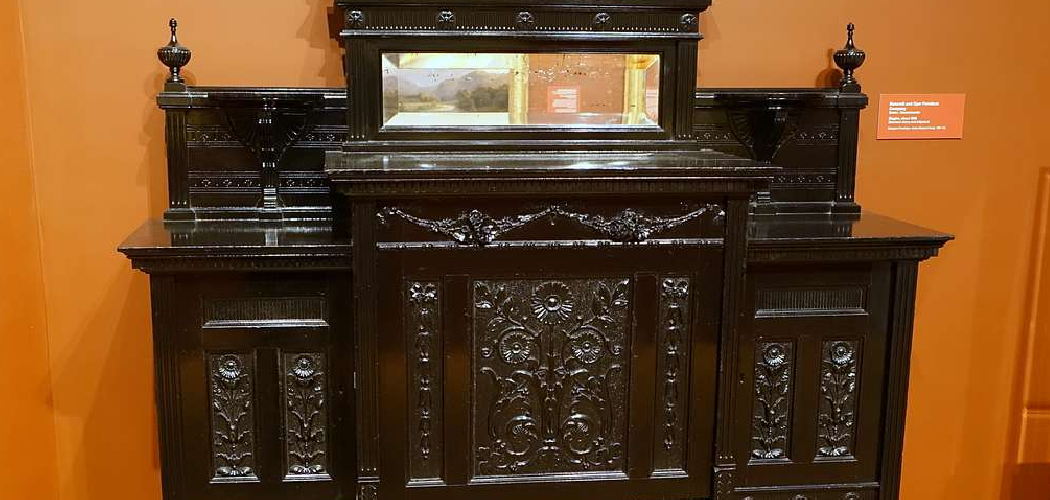Ebonizing wood is a finishing technique used to give wood a deep, dark, almost black appearance, mimicking the look of expensive ebony wood. This process is popular for both its aesthetic appeal and its ability to transform more accessible and sustainable woods into elegant, sophisticated pieces.
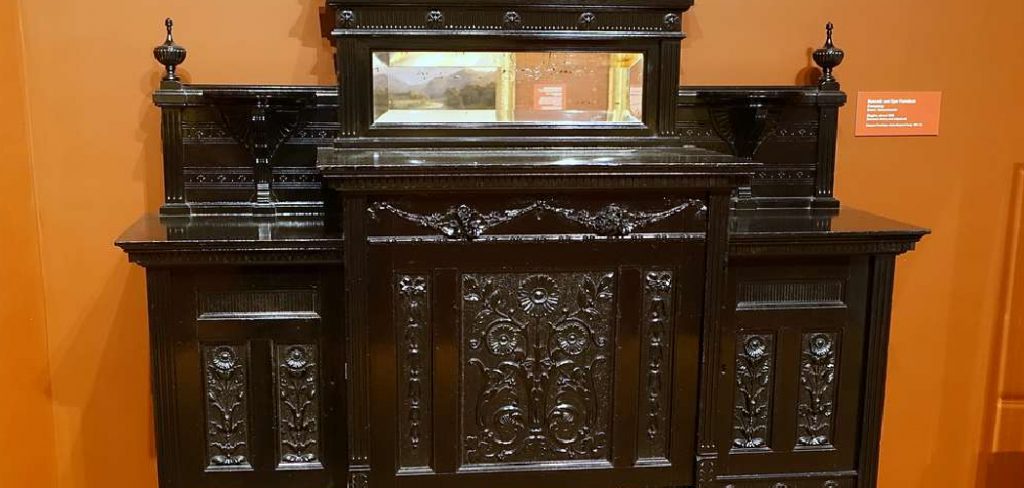
Ebonizing can be achieved using chemicals, stains, or natural methods, and it is a relatively simple yet impactful way to elevate the visual appeal of wooden furniture, décor, or woodworking projects. This guide will walk you through the steps of how to ebonize wood effectively and safely.
Difference Between Ebonizing and Staining
While ebonizing and staining may seem similar as they both involve changing the color of wood, the techniques and results are fundamentally different. Ebonizing is specifically aimed at replicating the rich, dark appearance of ebony wood and often relies on a chemical reaction between tannins in the wood and solutions like iron acetate to achieve a deep, natural-looking black finish.
On the other hand, staining involves the application of pigments or dyes to color the wood surface, allowing for a wide range of hues but sometimes lacking the depth and authenticity of an ebonized finish. Additionally, ebonizing tends to highlight the natural grain patterns of the wood, whereas staining may obscure these details depending on the product and application technique used. Understanding these differences helps in selecting the right method for achieving a desired aesthetic.
Benefits of Ebonizing Wood
Ebonizing wood offers several advantages that make it an appealing choice for various projects. One notable benefit is its ability to enhance the natural beauty of the wood by emphasizing the grain patterns, creating a bold and elegant contrast. This finish provides a sophisticated, rich black hue that adds depth and drama, making it ideal for modern or minimalist designs.
Unlike paint or some stains, ebonizing preserves the texture and natural feel of the wood, maintaining its authenticity. Additionally, ebonizing can be an eco-friendly option when using natural solutions such as steel wool and vinegar, avoiding the use of harsh chemicals. Its durability also ensures a long-lasting finish, protecting the wood while maintaining its striking appearance over time.
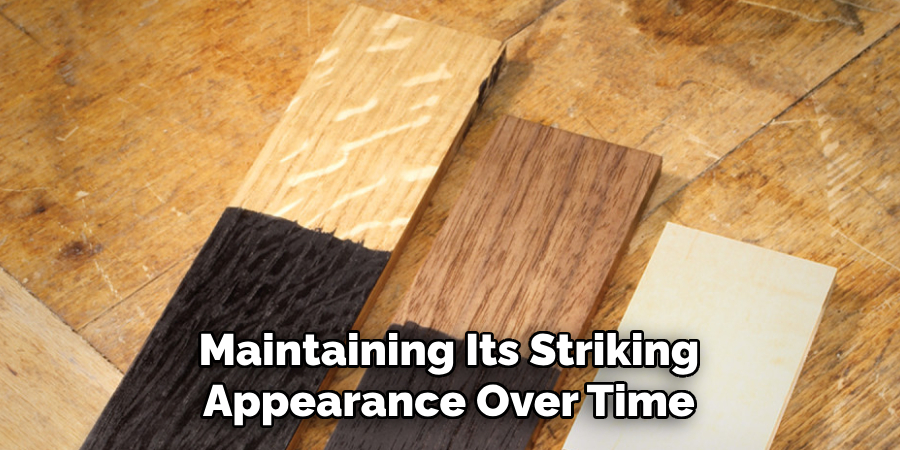
10 Methods How to Ebonize Wood
1. Iron Acetate Solution Method
One of the most popular and effective ways to ebonize wood is by creating an iron acetate solution. This can be made by combining steel wool or nails with vinegar. The reaction between the iron and vinegar creates a tannin-rich solution that, when applied to wood, reacts with its tannin content to darken it. To begin, place steel wool or nails in a jar and pour vinegar over them.
Let the mixture sit for a few days, shaking it occasionally. Once the solution turns dark brown, strain out any solid pieces and apply the liquid to the wood using a brush. The wood will begin to darken immediately, with the final shade developing over a few hours. This method is ideal for woods with high tannin content like oak, walnut, or cherry.
2. Tannin Solution and Iron Solution Combination
For a deeper and more consistent ebonized effect, you can use a two-step method involving both tannin and iron solutions. First, prepare a tannin-rich solution by boiling water with tea bags or oak gall powder. Apply this solution to the wood and let it dry. Once the tannin solution has dried completely, apply the iron acetate solution. The tannins in the wood will react more strongly with the iron, resulting in a darker, more uniform finish. This method works best on woods that might have a lower natural tannin content, as the tannin solution helps to boost the reaction.
3. Commercial Ebonizing Solutions
For those looking for a more straightforward and consistent approach, commercial ebonizing solutions are available that are specially formulated to darken wood. These products often contain a blend of tannins and iron compounds, designed to work on a variety of woods. To use a commercial solution, simply follow the manufacturer’s instructions. Most require applying the solution with a brush or cloth and allowing the wood to dry. Commercial ebonizers provide a reliable, uniform finish without the need to make your own solutions.
4. Ammonia Fuming Method
Ammonia fuming is another traditional method for ebonizing wood, commonly used in fine furniture making. This process involves exposing the wood to ammonia gas in a sealed container, which reacts with the tannins in the wood to darken it. To use this method, place the wood in a well-ventilated chamber, such as a plastic bag or a wooden box. Add an ammonia source, such as ammonium hydroxide or household ammonia, and seal the chamber. Leave the wood in the chamber for several hours or days, depending on the level of darkening you wish to achieve. This method works particularly well on oak, giving it a rich, dark hue with a soft sheen.
5. Charcoal Method
Another ancient method of ebonizing wood involves the use of charcoal to create a natural dark finish. This technique requires heating charcoal until it’s fully activated, either by burning or by using a charcoal grill. Once the charcoal is ready, grind it into a fine powder. Mix the charcoal powder with water to form a paste. Apply this paste to the wood, rubbing it in with a cloth or sponge. The charcoal adheres to the surface, leaving behind a deep, dark layer. This method can be effective on softer woods, such as pine, and adds a unique texture to the surface of the wood.
6. Coffee Staining and Iron Solution
A more organic approach to ebonizing wood involves using coffee as a base for the tannin solution, combined with an iron acetate solution. Brew a strong pot of coffee and allow it to cool. Once cooled, apply the coffee to the wood using a brush or rag. The tannins in the coffee will begin to react with the wood, lightening it slightly. After the coffee has dried, apply the iron acetate solution in the same manner. The combination of tannin-rich coffee and iron will darken the wood considerably, giving it a rich, black finish. This method is perfect for those who want a more eco-friendly approach to ebonizing.
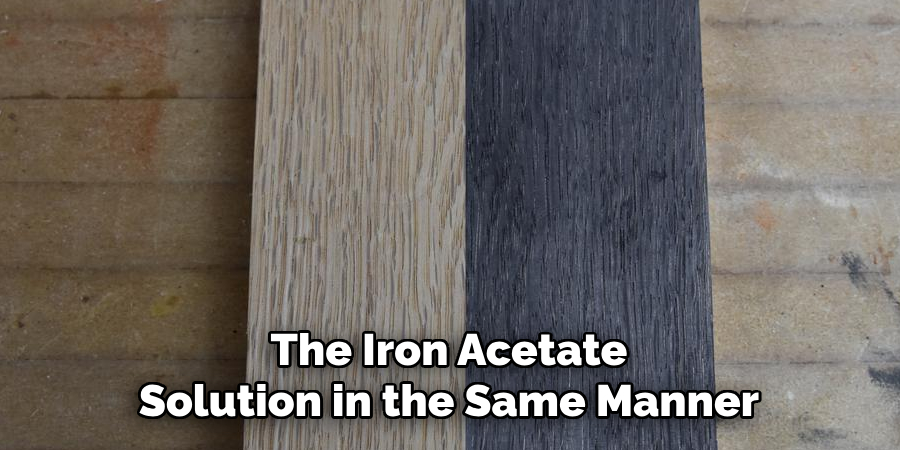
7. Tannic Acid (Oak Gall) Treatment
Tannic acid, derived from oak galls, is one of the most potent natural tannin sources. It is widely used in the tanning of leather and as a base for ebonizing wood. To use tannic acid, dilute it in water to create a strong solution and apply it to the wood. After the tannic acid has dried, apply an iron acetate solution to create a dark reaction. This method results in a very intense black finish, and it is especially effective on hardwoods with lower natural tannin content. Oak and walnut woods particularly benefit from this method, with the deep, dark color bringing out their natural grain.
8. Vinegar and Steel Wool with Tea Staining
A combination of vinegar, steel wool, and tea is a simple and popular ebonizing method. Begin by soaking tea bags in hot water to create a strong tannin solution. Once the tea has cooled, apply it to the wood with a brush or cloth. Allow the tea to dry fully before applying a mixture of vinegar and steel wool. As with other iron-based solutions, the tannins in the tea will react with the iron, darkening the wood. This method is effective on a wide range of wood types and is ideal for achieving a rich, black finish with minimal effort.
9. Burnt Umber Staining with Iron Acetate
For those seeking a more artistic and custom finish, using a combination of burnt umber pigment and iron acetate can achieve an ebonized effect with a touch of brown undertones. Mix burnt umber pigment with a carrier liquid such as water or alcohol, and apply it to the wood to create a warm base. Once the stain has dried, apply the iron acetate solution to achieve the final darkened effect. This method creates a unique finish with complex undertones and depth, perfect for artistic woodworking projects like furniture or decorative pieces.
10. Bleaching and Ebonizing
For a completely unique finish, you can first bleach the wood to lighten it and then apply an ebonizing solution to darken the wood to your desired level. Begin by applying a wood bleach, such as a two-part hydrogen peroxide solution, to lighten the wood. After the bleach has dried and the wood has returned to its natural texture, apply an ebonizing solution like iron acetate. The contrast between the bleached wood and the dark ebonized finish can create a stunning, dramatic effect. This method is especially effective for woods with uneven coloration or where a more artistic, varied appearance is desired.
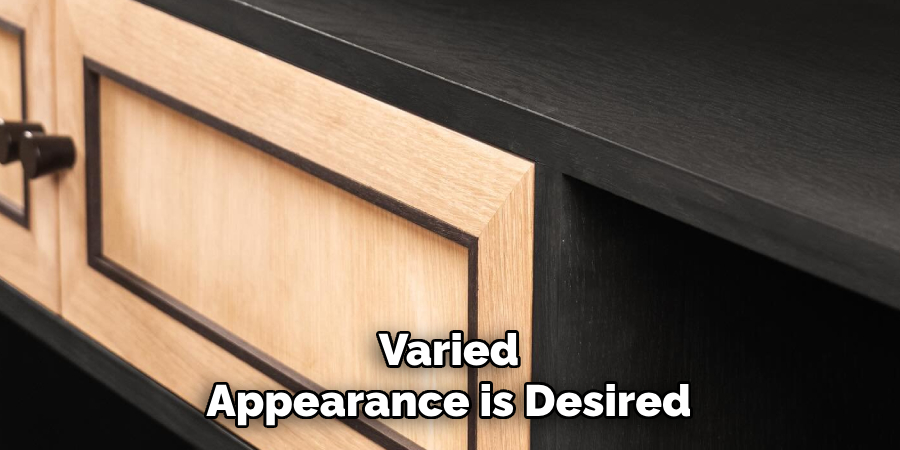
Conclusion
In conclusion, the process of altering wood coloration through bleaching and ebonizing allows for a high degree of customization and creativity. By carefully selecting and combining these techniques, you can achieve a striking, unique finish that highlights the natural beauty of the wood while adding depth and character to your project. With patience and attention to detail, this method can transform ordinary wood into a remarkable, artistic statement. So, there you have it – a quick and easy guide on how to ebonize wood.

